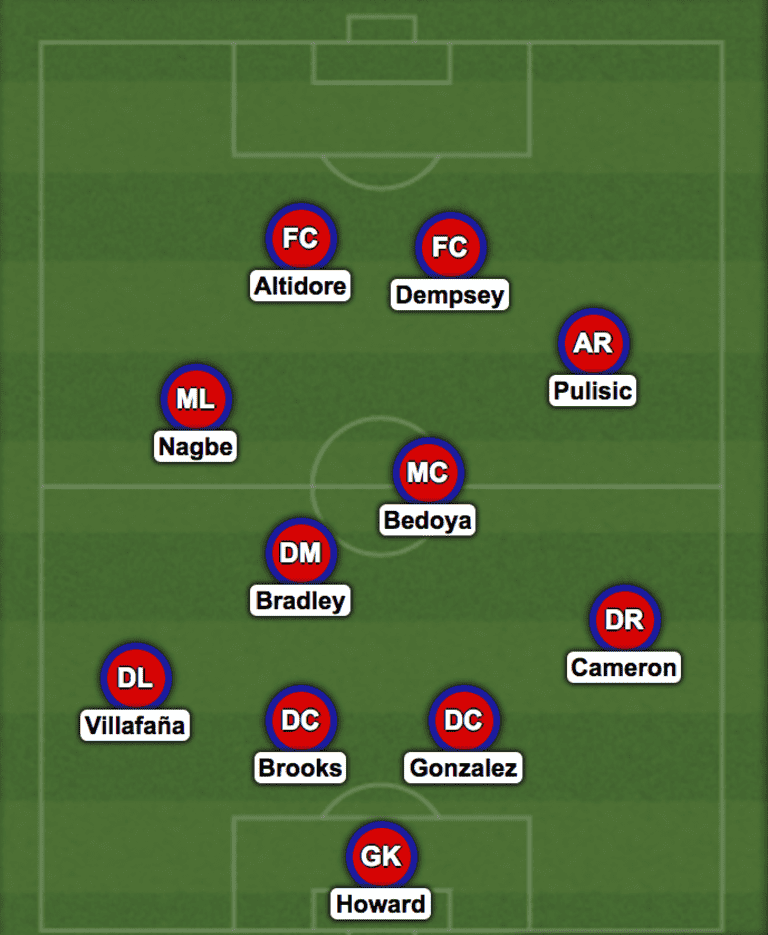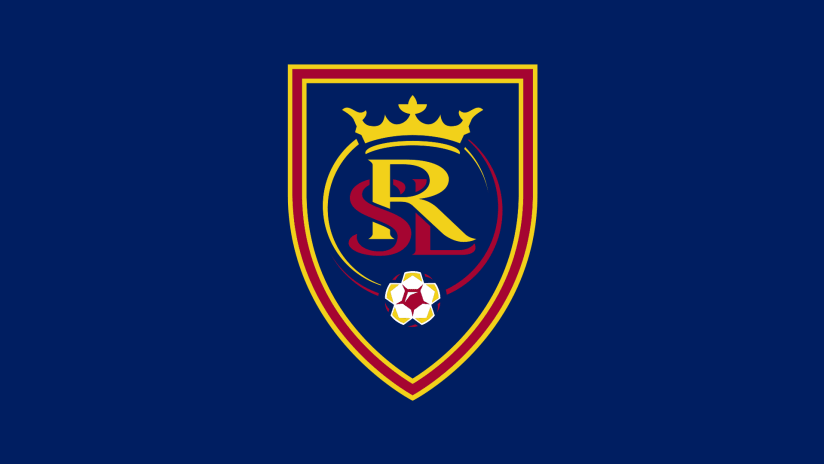ExtraTime Radio Podcast

LISTEN: No matter whether you think it's a must-win or not, there's no doubt the stakes for the US national team's Friday night Hex match against Honduras are massive. The guys break down the Hex with Sebastian Lletget, get some inside info on Los Catrachos from a well-placed source and then turn to MLS to pass judgment on Bastian Schweinsteiger to the Fire and the open Real Salt Lake job. Subscribe so you don't miss a show!
All of the below needs to be understood in this context: Honduras have conceded two goals in two World Cup qualifiers to start the Hexagonal. Both have been off of set pieces.
So when the USMNT come out on Friday night in a must-win qualifier against the Catrachos at Avaya Stadium in San Jose (10:30 pm ET; FS1, UniMás, UDN, Follow on the MLS App) with a 6-foot-3 right back, and a 6-foot-4 center back, and a 6-foot-3 center back, and a pair of 6-foot-1 forwards, and the tactical game plan is "get into a lot of duels around the box and draw fouls so we can murder these smaller people on restarts," understand that this is a sacrifice to Ye Mighty God Pragmatism, upon whose favor may we advance to the World Cup, so say we all.
Set pieces matter. This isn't to say that the US shouldn't be expected to create real and potentially decisive danger from open play – they should. I'll be disappointed if they don't.
But at the same time nobody should be surprised if the defining, lasting image of this all-important contest is of Omar Gonzalez burying the 5-foot-10 Henry Figueroa at the back post.
All goals are beautiful goals, folks.
Here's the bullet-pointed list of what I expect to see:
• The US will come out in a 4-4-2 that pinches the wide midfielders in and puts the creative burden primarily on those players.
I wrote about this in some depth in yesterday's column/Q&A, and for those who missed it, and here's the XI:

Two things to note here that I didn't really touch on yesterday. First is that Christian Pulisic should provide the type of off-the-ball penetration that the US generally lacked during the last few years of Jurgen Klinsmann's tenure. One of the defining traits of the US midfield since 2014 was a sort of clumpiness as pretty much everyone gravitated toward the ball, with no one really all that dedicated to finding open space by breaking the lines and shooting gaps.
Pulisic's greatest asset as a player – more than his touch or acceleration or his 1v1 ability – is that he's relentless about hitting those gaps both in transition, and from prolonged spells of possession:
He's also done so, to great effect, on as big a club stage as any US player has ever had.
Darlington Nagbe isn't really that kind of player, but he doesn't need to be. This is the synthesis between balance (good!) and symmetry (not necessarily good!) that managers always try to strike, and in theory it should work for the US. Nagbe will pinch inside to help in the build up, won't lose the ball, and has shown a lot more aggressiveness – nastiness? – to his game early this season.
I think he has to start because of all of the above, and because he draws fouls by the bushel. There are plausible lineups that have other guys in that role (Sebastian Lletget? DaMarcus Beasley???), but none of them make as much sense.
• Honduras will defend deep and counter. Duh.
Like the US I think they'll play some version of a 4-4-2 with flat banks of four to try to make it as difficult as possible to play through the lines. It's linear and boring and predictable but there's a reason every team in the world has this particular club in the bag.
The key to making it work will be, I think, figuring out which of the the forwards is disciplined enough defensively to sit on Michael Bradley and try to force turnovers. Bradley's gifted in a lot of ways, and he's the right guy to the the defensive midfielder for the USMNT now, and five years ago, and almost certainly next summer in Russia if we make it. But he can and will lose the occasional duel to smaller, more agile players, and teams that build out their strategy around that weakness can find success.
Even if that success isn't immediate – as in, "force a turnover, then run out and hit on the break" – there's a level of success in simply refusing to let Bradley dictate the pace of play or the geometry of the game. If he's able to hit diagonals to Pulisic or an overlapping left back (I still think it'll be Jorge Villafaña, as Bruce will want to save Beasley's legs for Panama), the "banks of four" can and will get very gappy, and that's when the likes of Clint Dempsey, Jozy Altidore or Nagbe will go to work.
• Set pieces are key. Defending against defending set pieces are also key.
This is freaking ridiculous and terrifying:
#CatrachoConnection#PORvHOUhttps://t.co/TIlyJ8T0no
— Houston Dynamo (@HoustonDynamo) March 19, 2017
That can and will happen if the US aren't well drilled in their transitions during/after any set piece. Alberth Elis and Romell Quioto can go end-to-end faster than any of the US defenders. So can Anthony Lozano, who may (should?) start ahead of one or the other, or in the center of a 4-3-3 (though I think that's less likely given how ineffective they all were in that formation against Panama to start the Hexagonal).
Former D.C. United Homegrown Andy Najar can run with these guys, too. They will burn.
• Expect the US fullbacks to support rather than overlap (for the most part).
I think both will support the attack and initiate possession rather than either getting all the way to the endline and whipping in crosses or something. Conceptualize them – especially Geoff Cameron, though – as ad hoc deep-lying midfielders rather than purely modern, overlapping fullbacks.
Neither will be at all static, but both will be a little bit more conservative than, say, Fabian Johnson and DeAndre Yedlin have been in the past. So the way to think of this 4-4-2 (or 4-1-3-2) is as a back five (the defenders + Bradley) with a front four (the forwards & wide players) and one go-wherever-you-want hybrid (Alejandro Bedoya or Kellyn Acosta or Lletget or Sacha Kljestan).
The advantage of using the fullbacks in that manner is twofold:
- Defensive structure. They won't be risking as much against the likes of Elis and Quioto.
- Varied and variable staging points for possession. It doesn't and won't have to all flow through and from Bradley.
Needless to say, Bradley himself will have to buy into this and not go seeking the ball at every opportunity. I think he will.
• Will Deuce and Jozy be in sync?
Both Dempsey and Altidore love to drop off the front line and into the pocket of space between midfield and defense to pick up the ball. Even with Pulisic threatening to burst through the defense, one of them still needs to curb that tendency and hold the line.
I'm not super concerned about them figuring out that division of labor, given the minutes and miles they've logged together:
That's what I want to see. Altidore can boss either Figueroa (Henry will probably, I think, be joined by Maynor Figueroa in central defense for Honduras?) physically, especially in the 18. Let Dempsey work off of him and poach.
• Deep possession should be as profitable as a high press.
I'm pretty sure the Honduras central midfield pair will be Roger Espinoza and Jorge Claros, and both are good players. Claros, however, can be forced into mistakes with the ball while Espinoza can be pulled upfield like a hound chasing a fox.
This is when the US has to be prepared to inflict damage, and why I think it's important to have passers rather than overlappers at the fullback spots. When Espinoza goes hunting gaps will open in the deep-central midfield, and that's when either Dempsey or Altidore has to show as an option. Playing the ball directly to their feet, into Zone 14 from the backline, is the best way to turn those moments into legitimate danger.
Please note this is also why the US and so many other teams around the world play a formation without what fans (and I) consider to be a "true No.10." Shuffling back the likes of Dempsey or Altidore from the frontline, or one of the wingers pinched in, or a deeper-lying midfielder pushed up into that spot keeps the 4-4-2 dynamic and unpredictable rather than bogging down.
The ball has no lungs. The US have the talent and chess pieces to use that to their advantage. If they manage it on Friday night, this long, cold winter of our discontent will be made, if not quite glorious summer, at the very least a spring of renewed hope, purpose and clarity.












